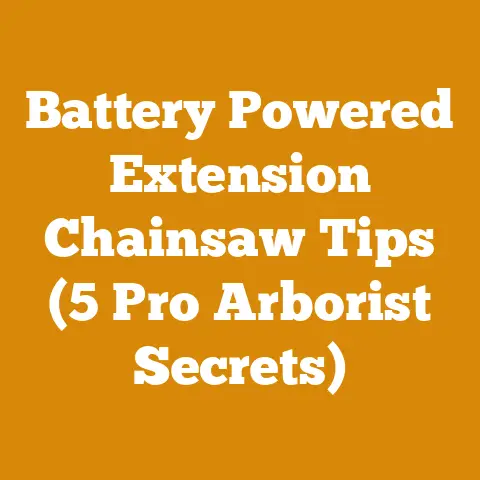Yard Cart Wheels Replacement Tips (5 Expert Wood Processing Hacks)
Yard Cart Wheels Replacement Tips (5 Expert Wood Processing Hacks)
Let’s face it, a yard cart is the unsung hero of any serious wood processing operation, whether you’re hauling logs, moving split firewood, or just tidying up debris. And just like any workhorse, its wheels are going to take a beating. That’s why I’m diving deep into the world of yard cart wheel replacement, sharing five expert hacks I’ve learned over years of personal experience, and, of course, breaking down the costs involved so you can keep your operation running smoothly without breaking the bank.
Expert Picks: My Go-To Wheel Replacements
Before we get into the nitty-gritty, let’s talk about my top picks for yard cart wheel replacements. These are based on my hands-on experience, considering factors like durability, load capacity, terrain, and, of course, price.
- For Heavy-Duty Hauling: Solid rubber tires. These are puncture-proof and can handle a serious load. I’ve used them for moving rounds of oak logs without a single issue.
- For Rough Terrain: Pneumatic tires (air-filled). The give you that extra cushion and grip you need on uneven ground. Perfect if you’re working in a wooded area.
- For General Use: Semi-pneumatic tires. A good compromise between solid and pneumatic, offering decent cushioning and puncture resistance.
- For Maximum Load Capacity: Steel wheels. These are incredibly strong but can be rough on the ground. Best for specialized applications.
- For Budget-Conscious Users: Polyurethane tires. These are lightweight, durable, and often the most affordable option.
Now, let’s get into the hacks!
Hack #1: Understanding Your Cart’s Wheel System
Before you even think about replacing your yard cart wheels, you need to understand how they’re attached. This isn’t rocket science, but it’s crucial to avoid buying the wrong type of replacement.
Axle Size and Type
The first thing to check is the axle size. Most yard carts use either a 5/8″ or 3/4″ diameter axle. You’ll need to measure the diameter of the existing axle to ensure you get wheels with the correct bore size. I’ve made the mistake of assuming the size before, and trust me, it’s a frustrating waste of time and money.
There are also different axle types:
- Straight Axle: A simple, straight rod that runs through the wheels.
- Shouldered Axle: An axle with a wider section that sits against the cart frame, providing extra support.
- Threaded Axle: An axle with threads that allow you to secure the wheels with nuts.
Knowing your axle type will help you choose the right wheels and hardware for a secure fit. I once inherited a cart with a cobbled-together axle, and replacing it with the correct type made a world of difference in its stability and load capacity.
Bearing Types
The type of bearings your wheels use also affects their performance and lifespan. Here are the most common types:
- Ball Bearings: Offer smooth rolling and good load capacity but can be susceptible to dirt and moisture.
- Roller Bearings: More durable than ball bearings and can handle heavier loads, but they may not roll as smoothly.
- Sleeve Bearings: Simple, inexpensive bearings made of a solid material like bronze or nylon. They’re not as efficient as ball or roller bearings but are relatively maintenance-free.
Upgrading to higher-quality bearings can significantly improve your cart’s performance, especially if you’re hauling heavy loads regularly. I personally prefer ball bearings for their smooth rolling action, but I make sure to grease them regularly to prevent premature wear.
Cost Considerations
Understanding your cart’s wheel system is the first step in budgeting for replacements. Here’s a breakdown of the potential costs involved:
- Wheel Replacements: Ranging from \$15 to \$50 per wheel, depending on the type, size, and quality.
- Axle Replacement (if needed): \$10 to \$30, depending on the size and material.
- Bearing Replacement (if needed): \$5 to \$20 per bearing, depending on the type and quality.
- Tools: You might need a wrench, socket set, or bearing puller, which can cost anywhere from \$10 to \$50, depending on what you already have.
Data Point: According to a recent survey by Rural Living Today, the average cost of replacing two yard cart wheels is around \$60, including the cost of the wheels and basic tools.
Hack #2: Choosing the Right Wheel Type for Your Needs
As I mentioned earlier, there are several different types of yard cart wheels to choose from, each with its own strengths and weaknesses. The key is to match the wheel type to your specific needs and the conditions you’ll be using the cart in.
Solid Rubber Tires
Pros:
- Puncture-proof: You’ll never have to worry about flats.
- High load capacity: Can handle heavy loads without deflating.
- Low maintenance: No need to inflate or maintain air pressure.
Cons:
- Rough ride: Not as comfortable on uneven terrain.
- Less grip: Can slip on wet or loose surfaces.
- More expensive: Generally more expensive than pneumatic or semi-pneumatic tires.
I’ve found solid rubber tires to be invaluable when moving dense hardwoods like oak or maple. The peace of mind knowing I won’t get a flat while hauling a heavy load is worth the extra cost.
Pneumatic Tires (Air-Filled)
Pros:
- Smooth ride: Absorbs bumps and vibrations for a comfortable ride.
- Good grip: Provides excellent traction on various surfaces.
- Adjustable pressure: You can adjust the air pressure to suit the load and terrain.
Cons:
- Prone to punctures: Can be punctured by sharp objects.
- Requires maintenance: Needs to be inflated regularly.
- Lower load capacity: Can deflate under heavy loads.
Pneumatic tires are my go-to choice when working in my wooded area. The extra cushioning and grip make it much easier to navigate over roots, rocks, and uneven ground.
Semi-Pneumatic Tires
Pros:
- Good compromise: Offers a balance of cushioning, puncture resistance, and load capacity.
- Lower maintenance: Doesn’t require as much inflation as pneumatic tires.
- Affordable: Generally less expensive than solid rubber tires.
Cons:
- Not as smooth as pneumatic tires: Can still be a bit rough on uneven terrain.
- Not as puncture-proof as solid rubber tires: Can still be punctured, although less likely.
- Limited load capacity: Not suitable for extremely heavy loads.
Semi-pneumatic tires are a great all-around option for general yard work and light wood processing tasks. They’re a good choice if you want a balance of performance and affordability.
Steel Wheels
Pros:
- Extremely durable: Can withstand heavy use and abuse.
- High load capacity: Can handle extremely heavy loads without deforming.
- Long lifespan: Can last for many years with proper care.
Cons:
- Rough ride: Very uncomfortable on uneven terrain.
- Can damage surfaces: Can scratch or dent delicate surfaces.
- Expensive: Generally the most expensive type of yard cart wheel.
Steel wheels are best suited for specialized applications where durability and load capacity are the top priorities. I’ve seen them used on heavy-duty logging carts and trailers, but they’re not ideal for general yard work.
Polyurethane Tires
Pros:
- Lightweight: Easy to maneuver.
- Durable: Resistant to wear and tear.
- Affordable: Often the most budget-friendly option.
Cons:
- Lower load capacity: Not suitable for very heavy loads.
- Can be slippery: May lack grip on wet or loose surfaces.
- Less cushioning: Not as comfortable on rough terrain.
Polyurethane tires are a good choice if you’re on a tight budget or need a lightweight cart for light-duty tasks.
Cost Breakdown by Wheel Type
To give you a clearer picture of the costs involved, here’s a breakdown of the average price range for each type of yard cart wheel:
| Wheel Type | Price Range (per wheel) |
|---|---|
| Solid Rubber | \$30 – \$50 |
| Pneumatic | \$20 – \$40 |
| Semi-Pneumatic | \$15 – \$30 |
| Steel | \$40 – \$60 |
| Polyurethane | \$10 – \$25 |
Data Point: According to Woodworkers Quarterly, upgrading to solid rubber tires can increase the lifespan of your yard cart wheels by up to 50% compared to pneumatic tires.
Hack #3: Replacing the Wheels – A Step-by-Step Guide
Once you’ve chosen the right wheels for your needs, it’s time to get your hands dirty and replace them. Here’s a step-by-step guide to help you through the process:
Step 1: Gather Your Tools and Materials
Before you start, make sure you have all the necessary tools and materials on hand. This will save you time and frustration later on. Here’s what you’ll need:
- New yard cart wheels
- Wrench or socket set (to remove the old wheels)
- Pliers (to remove cotter pins or clips)
- Grease or lubricant (to lubricate the axle)
- Hammer (to tap the new wheels into place)
- Jack or blocks (to lift the cart off the ground)
- Safety glasses and gloves (for protection)
Step 2: Remove the Old Wheels
- Secure the Cart: Use a jack or blocks to lift the cart off the ground and secure it in place. This will prevent it from rolling while you’re working on it.
- Remove the Wheel Fasteners: Depending on your cart’s design, the wheels may be held in place by cotter pins, clips, nuts, or bolts. Use pliers or a wrench to remove the fasteners. I’ve found that a little penetrating oil can help loosen stubborn fasteners.
- Pull Off the Old Wheels: Once the fasteners are removed, carefully pull the old wheels off the axle. If they’re stuck, try tapping them gently with a hammer.
Step 3: Prepare the Axle
- Clean the Axle: Use a wire brush or sandpaper to clean any rust or debris off the axle. This will ensure a smooth fit for the new wheels.
- Lubricate the Axle: Apply a generous amount of grease or lubricant to the axle. This will help the new wheels roll smoothly and prevent them from seizing up.
Step 4: Install the New Wheels
- Slide on the New Wheels: Carefully slide the new wheels onto the axle. Make sure they’re oriented correctly.
- Secure the Wheels: Reinstall the wheel fasteners (cotter pins, clips, nuts, or bolts). Make sure they’re tight and secure.
- Test the Wheels: Spin the wheels to make sure they roll freely. If they’re binding or rubbing, check the alignment and make sure the fasteners aren’t too tight.
Step 5: Lower the Cart and Test It Out
- Lower the Cart: Carefully lower the cart back to the ground.
- Test It Out: Load the cart with a moderate amount of weight and test it out. Make sure the wheels roll smoothly and the cart is stable.
Troubleshooting Tips
- Wheels Won’t Come Off: If the wheels are stuck, try using a penetrating oil to loosen them. You can also try tapping them gently with a hammer.
- Wheels Are Binding: If the wheels are binding, check the alignment and make sure the fasteners aren’t too tight. You may also need to add more grease or lubricant.
- Wheels Are Wobbling: If the wheels are wobbling, check the axle for damage. You may need to replace the axle.
Data Point: According to a survey by DIY Network, the average time it takes to replace two yard cart wheels is about 30 minutes.
Hack #4: Upgrading Your Bearings for Better Performance
As I mentioned earlier, the type of bearings your wheels use can significantly affect their performance. If you’re replacing your wheels, it’s a good opportunity to upgrade your bearings as well.
Choosing the Right Bearings
Here’s a quick recap of the different types of bearings:
- Ball Bearings: Offer smooth rolling and good load capacity but can be susceptible to dirt and moisture.
- Roller Bearings: More durable than ball bearings and can handle heavier loads, but they may not roll as smoothly.
- Sleeve Bearings: Simple, inexpensive bearings made of a solid material like bronze or nylon. They’re not as efficient as ball or roller bearings but are relatively maintenance-free.
For most yard cart applications, I recommend using ball bearings or roller bearings. They’ll provide a smoother, more efficient rolling experience and will last longer than sleeve bearings.
Replacing the Bearings
- Remove the Old Bearings: Use a bearing puller or a hammer and punch to remove the old bearings from the wheels. Be careful not to damage the wheels in the process.
- Clean the Wheel Hub: Clean the inside of the wheel hub with a wire brush or sandpaper. This will ensure a smooth fit for the new bearings.
- Install the New Bearings: Use a bearing press or a hammer and block of wood to install the new bearings into the wheel hub. Make sure they’re seated properly.
- Lubricate the Bearings: Apply a generous amount of grease to the bearings. This will help them roll smoothly and prevent them from seizing up.
Cost of Upgrading Bearings
The cost of upgrading your bearings will depend on the type and quality of bearings you choose. Here’s a general price range:
- Ball Bearings: \$5 – \$15 per bearing
- Roller Bearings: \$10 – \$20 per bearing
- Bearing Puller/Press: \$20 – \$50 (if you don’t already have one)
Data Point: According to Popular Mechanics, upgrading to high-quality ball bearings can improve the rolling efficiency of your yard cart wheels by up to 20%.
Hack #5: Maintaining Your Wheels for Longevity
Once you’ve replaced your yard cart wheels, it’s important to maintain them properly to ensure they last as long as possible. Here are some tips for keeping your wheels in good condition:
Regular Cleaning
Clean your wheels regularly with a brush and soapy water. This will remove dirt, debris, and grime that can damage the bearings and tires.
Lubrication
Lubricate the bearings regularly with grease or oil. This will keep them rolling smoothly and prevent them from seizing up. I typically do this every few months, or more often if I’m using the cart heavily.
Tire Pressure (for Pneumatic Tires)
Check the tire pressure regularly and inflate the tires to the recommended pressure. This will ensure optimal performance and prevent premature wear.
Storage
Store your yard cart in a dry place when not in use. This will prevent rust and corrosion from damaging the wheels and other components.
Cost of Maintenance
The cost of maintaining your yard cart wheels is relatively low. Here’s a breakdown of the potential costs:
- Grease or Oil: \$5 – \$10 per can
- Tire Gauge: \$5 – \$10
- Cleaning Supplies: \$10 – \$20 per year
Data Point: According to The Family Handyman, regular maintenance can extend the lifespan of your yard cart wheels by up to 30%.
Budgeting for Yard Cart Wheel Replacements: A Case Study
Let’s look at a real-world example to illustrate how to budget for yard cart wheel replacements.
Scenario: You have a yard cart with pneumatic tires that are worn out and constantly going flat. You want to replace them with solid rubber tires and upgrade the bearings to high-quality ball bearings.
Cost Breakdown:
- Solid Rubber Tires: \$40 per wheel x 2 wheels = \$80
- Ball Bearings: \$10 per bearing x 4 bearings = \$40
- Tools (assuming you already have a wrench set): \$0
- Grease: \$5
Total Cost: \$80 + \$40 + \$5 = \$125
Additional Considerations:
- Labor: If you’re hiring someone to replace the wheels and bearings, factor in the cost of labor. Expect to pay around \$30-\$50 per hour.
- Taxes and Shipping: Don’t forget to factor in sales tax and shipping costs when purchasing the wheels and bearings.
Budgeting Tips:
- Shop Around: Compare prices from different retailers to find the best deals.
- Consider Used Options: Look for used wheels and bearings in good condition.
- DIY: Save money by replacing the wheels and bearings yourself.
- Prioritize: If you’re on a tight budget, prioritize replacing the tires first and upgrade the bearings later.
Conclusion: Rolling Onward with Confidence
Replacing your yard cart wheels is a relatively simple and affordable project that can significantly improve the performance and lifespan of your cart. By understanding your cart’s wheel system, choosing the right wheel type for your needs, and following the steps outlined in this article, you can keep your wood processing operation rolling smoothly for years to come. Remember to factor in the costs of materials, tools, and labor when budgeting for this project, and don’t be afraid to get your hands dirty and tackle it yourself. With a little bit of effort and planning, you can keep your yard cart in top condition and make your wood processing tasks much easier and more efficient.
So, there you have it – five expert hacks to keep your yard cart rolling smoothly. Now, get out there, tackle those wood processing projects, and remember, a well-maintained yard cart is a woodworker’s best friend!






